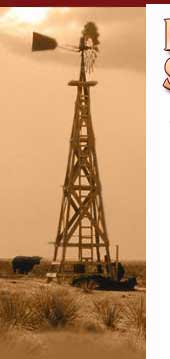|
Direct marketing of beef: Pro's and con's, do's and don'ts
C.J. Mucklow, Routt County Ag Extension Educator, CSU

To have a direct-marketing plan you must be able to "sell the sizzle," said C.J. Mucklow, Routt County Extension ag educator. This means making your product more than just commodity meat by selling a locale or management practices for raising the product.
|
Family members who are removed from the family farm or ranch may have benefited from access to a side or a quarter of beef for many years; however, providing beef cuts directly from the ranch to a select few has grown to a source of extra income for many ranchers who have turned to direct marketing.
Attendees at the 2003 Range Beef Cow Symposium XVIII in Mitchell, Neb., learned about such programs and the pros and cons of starting a direct-marketing business from C.J. Mucklow, Routt County Extension ag educator, Colorado State University (CSU).
The income incentive is a major pro of a direct-marketing program. "Cattle ranching is a commodity-based business in which there are only three ways to make more money. The first is to raise more beef, which means increasing cow numbers and/or pounds weaned," Mucklow said. "The second is to capture more value per unit by retaining ownership. Lastly, add an enterprise on the ranch that captures money from an existing resource base not presently generating income."
Similar to income from a game-hunting enterprise, marketing beef cuts can fill a niche in select areas. Consumer demand for beef is on the rise, and targeting those desiring consistent beef from a specific program or area of the country may provide opportunity to tap into a valuable marketplace.
Mucklow helped develop Yampa Valley Beef, a direct-marketing program that capitalizes on tourists who come to Steamboat Springs, Colo. The Yampa Valley Beef group has offered ski resorts a beef product that is identified with the rural landscape used to attract tourists.
Area restaurants have been able to benefit financially from providing the product, and its beef producers can take pride in their product and their efforts to preserve the land for future generations, Mucklow said.
But success has not come without a few lessons. Many mistakes can be learned from, but there are also cons associated with marketing beef direct, Mucklow said. It’s a tough market that requires a large initial investment of time, capital and labor.
"You might be way ahead financially by seeking off-farm employment rather than taking time and effort to direct-market beef," he said.
Another perceived risk is verifiable traceback. Consumers will know exactly where the product originated. If they have an undesirable experience with the product or experience with a product that’s proven to be a health concern, Mucklow pointed out, "it may be the processors fault, but it’s your label."
After weighing the pros and cons, Mucklow shared the dos and don’ts. Every new product needs to fill a niche or possess a marketing gimmick that sets it apart from others already in the market. However, he said, making false claims, or claims that cannot be backed up, is a major don’t in marketing beef.
It’s important to develop a plan for your marketing venture long before the first business transaction takes place, Mucklow cautioned.
The business plan will involve many angles of the business, including marketing product, business structure and long-term financial goals. Mucklow warned that a business plan isn’t static, but necessary. Yampa Valley Beef didn’t develop a business plan when they first started and had to shut down business to do so after almost two years of business.
Developing a good relationship with the processor is also a must, Mucklow said. It’s important to consult with a meat specialist when working with the processor and to take that step early in the game, he added.
Mucklow’s last advice was to "start small and be able to afford your mistakes."
— by Corinne Patterson
For more information on Yampa Valley Beef, see "Act Locally" on pages 172-174 of the June/July 2000 Angus Journal and "Good Neighbors" on pages 35-39 of the October 2000 Angus Journal. Both articles are available via a back issue search by month or by the key word "Yampa" at www.angusjournal.com.
Click here to download the presentation (in pdf format).
 You will need Acrobat Reader to view . You will need Acrobat Reader to view .
Click the image to download a free copy.
Click here to listen to the presentation
You will need Windows Media Player to listen in.
Click here to download a free version.
|
